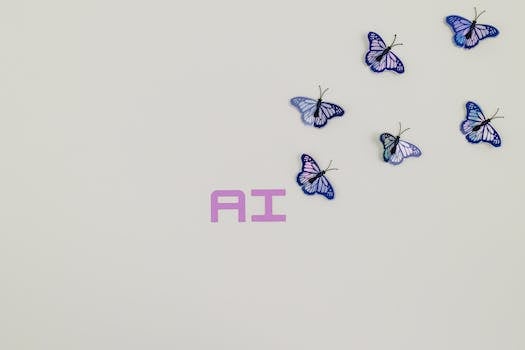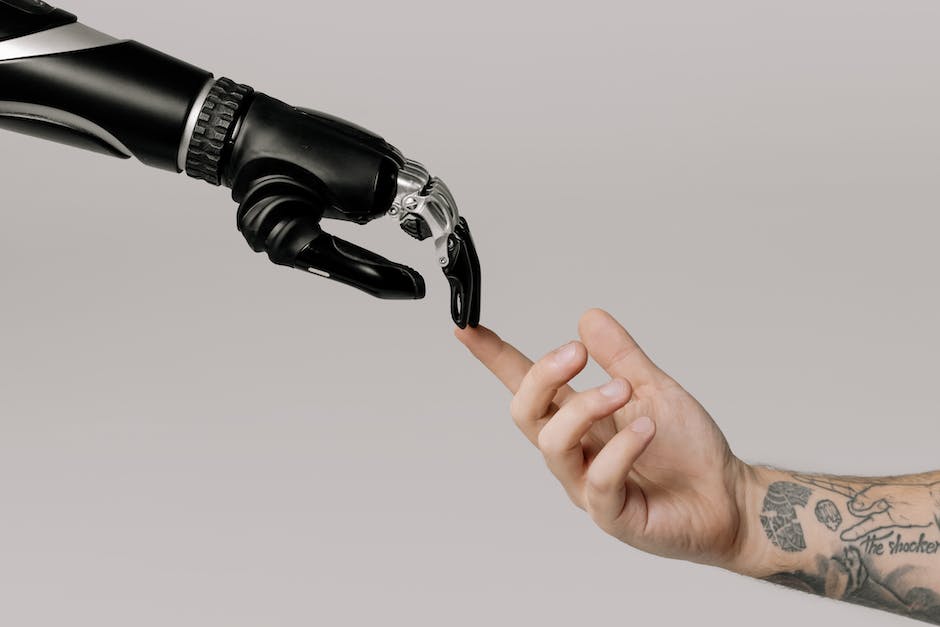Benefits of Conversational AI over Traditional Chatbots
Conversational AI offers several advantages over traditional chatbots. Firstly, Conversational AI has the ability to simulate human-like conversations, providing a more engaging and personalized experience for users. This enhanced conversational capability allows for a more natural and interactive interaction, enabling users to ask complex questions and receive relevant responses in real-time.
Secondly, Conversational AI can understand and interpret user intent more accurately. By utilizing natural language processing and machine learning algorithms, it can analyze and comprehend the context of a conversation, enabling it to provide more precise and context-sensitive responses. This ensures a higher level of customer satisfaction and reduces the chances of miscommunication or frustration.
In conclusion, the adoption of Conversational AI offers numerous benefits over traditional chatbots. Its advanced conversational capabilities and improved understanding of user intent make it a powerful tool for enhancing user experiences and driving customer engagement. Stay tuned for the forthcoming sections of this article to explore the limitations, key features, use cases, and factors to consider when choosing between traditional chatbots and Conversational AI.
Limitations of Conversational AI compared to Traditional Chatbots
One limitation of Conversational AI compared to Traditional Chatbots is the potential for misinterpretation. While Conversational AI systems have made significant advancements in understanding natural language, they can still struggle with accurately comprehending complex queries or statements. This can lead to incorrect responses or misunderstandings, which can be frustrating for users seeking accurate information or assistance.
Another limitation is the lack of emotional intelligence exhibited by Conversational AI.

• Conversational AI systems can struggle with accurately comprehending complex queries or statements, leading to misinterpretation and incorrect responses.
• Traditional Chatbots are often programmed with predefined responses that exhibit empathy or sympathy, making them more relatable in certain scenarios.
• Conversational AI may lack emotional intelligence due to their reliance on algorithms and data-driven decision-making.
• This limitation can be crucial in customer service or other situations where users require a compassionate and empathetic response.
Key features of Traditional Chatbots
Traditional chatbots have been a staple of automated customer service for many years, offering a range of key features. One important feature is the ability to provide instant responses to customer inquiries. These bots are programmed to analyze and understand user input, generating appropriate answers without delay. Additionally, traditional chatbots often have pre-determined scripts that allow them to handle common customer queries efficiently. Their structured flow ensures consistency in responses and saves time by quickly resolving basic customer issues.
Another key feature of traditional chatbots is their ability to handle large volumes of inquiries simultaneously. These bots can engage in multiple conversations at once, providing support to numerous customers without compromising response time or quality. This scalability is particularly beneficial for businesses with high customer interaction levels, as it allows them to deliver prompt assistance to a large customer base. The efficiency of traditional chatbots in managing a high workload makes them a reliable tool in ensuring customer satisfaction and optimizing resource allocation for businesses.
Key features of Conversational AI
Conversational AI, also known as chatbots, offers a wide range of key features that enhance user experience and streamline communication. One of the key features of Conversational AI is its ability to understand natural language. Unlike traditional chatbots that require specific commands or keywords, Conversational AI can comprehend and respond to human language patterns and nuances. This capability not only eliminates the need for users to learn a particular set of instructions but also creates a more engaging and personalized interaction.
Another notable feature of Conversational AI is its seamless integration across various platforms and channels. Whether it’s a website, social media platform, or messaging app, Conversational AI can be easily implemented, providing a consistent and efficient user experience. Additionally, Conversational AI can be integrated with other technologies such as voice recognition and machine learning, enabling it to continually learn and improve its responses over time. With these advanced features, Conversational AI offers a high level of versatility and adaptability for businesses seeking effective customer communication and support solutions.
Use cases for Traditional Chatbots
One of the key use cases for traditional chatbots is in customer support services. Traditional chatbots can be utilized to handle basic customer queries, provide information about products or services, and assist customers with account-related tasks. By integrating traditional chatbots into customer support systems, businesses can automate routine tasks, improve response times, and enhance overall customer experience.
Another prominent use case for traditional chatbots is in lead generation and sales. These chatbots can be programmed to engage website visitors, answer their queries, and guide them through the sales process. By leveraging traditional chatbots, businesses can capture leads, qualify prospects, and even facilitate transactions, all without human intervention. This not only increases efficiency but also enables businesses to provide 24/7 customer service while generating potential revenue.
Use cases for Conversational AI
Conversational AI has emerged as a powerful tool across various industries, offering a wide range of use cases to enhance customer experience and streamline operations. One prominent use case is in customer support and service. Conversational AI-powered chatbots can handle customer queries and provide instant responses, reducing the need for human intervention. This not only improves response time but also enables businesses to deliver personalized and consistent support to a large number of customers simultaneously. Additionally, Conversational AI can be integrated into e-commerce platforms, allowing customers to interact with virtual assistants for product recommendations, order tracking, and personalized shopping experiences.
In the healthcare sector, Conversational AI has found significant utility in patient engagement and support. Virtual assistants can provide real-time medical information, answer basic health-related queries, and even assist in triaging patients based on symptoms. This enables healthcare providers to efficiently manage patient load, provide timely information, and offer personalized care remotely. Furthermore, Conversational AI can enhance educational institutions by automating administrative tasks, assisting students with inquiries, and facilitating interactive learning experiences. This technology empowers educational institutions to efficiently manage their resources, improve student engagement, and provide personalized support.
Factors to consider when choosing between Traditional Chatbots and Conversational AI
Factors to consider when choosing between Traditional Chatbots and Conversational AI
When deciding between traditional chatbots and conversational AI, there are several crucial factors that need to be considered. Firstly, the level of complexity and natural language processing capability required should be evaluated. Traditional chatbots typically follow predetermined flowcharts and are more suitable for simple, structured conversations. On the other hand, conversational AI utilizes advanced machine learning algorithms and can handle more complex and dynamic interactions.
Another key factor to consider is the need for customization and personalization. Traditional chatbots are often limited in terms of their ability to provide personalized responses. Conversational AI, on the other hand, can analyze user preferences, past behavior, and context to deliver highly tailored and personalized experiences.
Additionally, the scalability and integration options should be taken into account. Traditional chatbots may require significant development effort and time to integrate with existing systems, while conversational AI platforms often offer seamless integration with various channels and platforms.
The decision between traditional chatbots and conversational AI ultimately depends on the specific requirements and objectives of each individual organization. Considering the complexity, customization, scalability, and integration options will assist in making an informed choice that aligns with the organization’s goals and enhances the overall user experience.
Cost implications of Traditional Chatbots vs. Conversational AI
One of the factors that organizations need to consider when choosing between traditional chatbots and conversational AI is the cost implications. Traditional chatbots typically require a significant upfront investment, as they need to be custom-built and programmed to handle specific tasks. Additionally, ongoing maintenance and updates are necessary to ensure the chatbot remains functional and up to date with the latest technologies. This can result in higher operational costs over time.
Conversational AI, on the other hand, offers potential cost savings in several ways. Firstly, conversational AI platforms often come with pre-built templates and frameworks that can be easily customized and deployed, reducing the time and resources required for development. Additionally, conversational AI leverages natural language processing and machine learning capabilities, allowing it to learn and improve over time without the need for manual intervention. This automation can help decrease ongoing maintenance costs compared to traditional chatbots. However, it’s important to note that the overall cost implications of traditional chatbots vs. conversational AI will ultimately depend on the specific needs and requirements of each organization.
Integration options for Traditional Chatbots
Traditional chatbots offer a range of integration options that allow for seamless incorporation into various platforms and systems. One such option is the Application Programming Interface (API) integration, which enables chatbots to interact with external applications and share data. This integration option facilitates a smooth workflow by allowing the chatbot to access and retrieve information from other software or databases, enhancing its ability to provide accurate and relevant responses to user queries. Additionally, traditional chatbots can be integrated with Customer Relationship Management (CRM) systems, enabling them to access customer data and provide personalized and contextually relevant responses. This integration option helps streamline customer interactions by leveraging existing customer information to deliver a more tailored user experience.
Furthermore, traditional chatbots can be integrated with messaging platforms such as Facebook Messenger, Slack, or WhatsApp, making them easily accessible to users on these popular platforms.

In conclusion, the integration options available for traditional chatbots are extensive and diverse, offering flexibility and convenience for businesses and users alike. Whether it is API integration, CRM integration, or integration with messaging platforms, traditional chatbots can be seamlessly incorporated into different systems to enhance user experience and streamline workflow processes.
Integration options for Conversational AI
As businesses increasingly adopt conversational AI solutions, it becomes crucial to consider the integration options available for seamless implementation. One integration option for conversational AI is through web-based platforms. By integrating conversational AI with a website, businesses can provide real-time support and assistance to their customers, enhancing their overall experience.

Another integration option for conversational AI is through mobile applications. With the widespread use of smartphones, integrating conversational AI into mobile apps can offer a convenient and user-friendly experience for customers on the go. By incorporating chatbot capabilities within mobile applications, businesses can address customer concerns, provide personalized recommendations, and even process transactions. This integration allows for a seamless interaction between users and the AI-powered virtual assistant, maximizing customer satisfaction and driving engagement.
What are the benefits of Conversational AI over Traditional Chatbots?
Conversational AI offers more natural and human-like conversations, better understanding of user intent, and the ability to handle complex queries with context.
What are the limitations of Conversational AI compared to Traditional Chatbots?
Conversational AI may require more advanced technology and resources, and it may struggle with ambiguous or highly specific queries.
What are the key features of Traditional Chatbots?
Traditional Chatbots typically have pre-defined responses, basic natural language processing capabilities, and limited contextual understanding.
What are the key features of Conversational AI?
Conversational AI incorporates advanced natural language processing, machine learning, and deep learning techniques to understand and respond to user queries in a more human-like manner.
What are some use cases for Traditional Chatbots?
Traditional Chatbots are commonly used for simple customer support, FAQs, and basic information retrieval tasks.
What are some use cases for Conversational AI?
Conversational AI can be used for complex customer interactions, personalized recommendations, virtual assistants, and more advanced conversational tasks.
What factors should be considered when choosing between Traditional Chatbots and Conversational AI?
Factors to consider include the complexity of user queries, desired level of conversational ability, available resources, and the specific use case requirements.
What are the cost implications of Traditional Chatbots vs. Conversational AI?
Traditional Chatbots are generally less expensive to develop and maintain compared to Conversational AI, which may require more advanced technology and ongoing training.
What are the integration options for Traditional Chatbots?
Traditional Chatbots can be integrated with messaging platforms, websites, and mobile apps using APIs or SDKs provided by the chatbot platform.
What are the integration options for Conversational AI?
Conversational AI can be integrated with various channels, including messaging platforms, voice assistants, websites, and mobile apps, using APIs or custom integrations.

